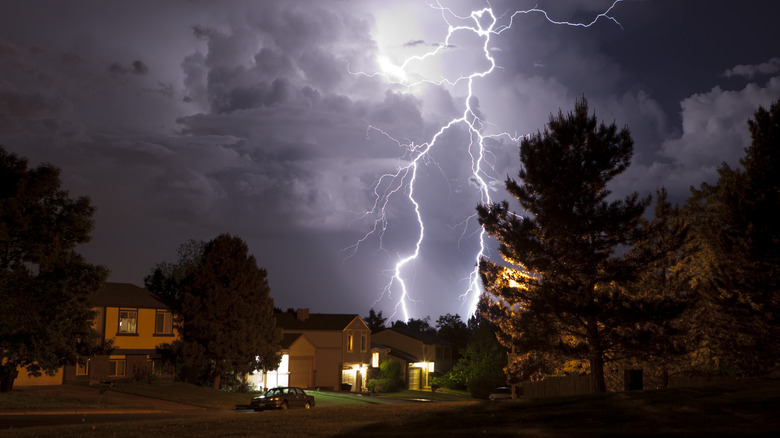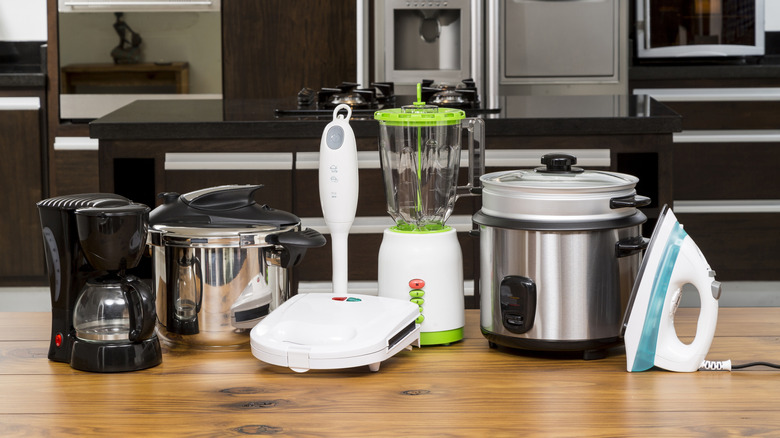Kitchen Appliances You Need To Unplug Before Severe Weather Hits
Thunderstorms present a genuine risk to our valuable electronics through lightning-induced power surges. This can occur indirectly when the electrical burst generates a magnetic field or by way of a direct strike. While some people might frantically unplug every device in sight at the first crack of thunder, others barely give it a second thought. But realistically, protecting your electronics falls somewhere in between these extremes, and knowing which devices to prioritize can save you time and protect your most valuable investments.
A good handful of those valuable devices are in your kitchen. Small countertop appliances, including coffee makers, toasters, air fryers, and stand mixers, are especially vulnerable. This is primarily because, unlike many major appliances such as refrigerators and ranges, the smaller devices often don't have built-in surge protection. With that said, if you'd rather take that extra precaution with larger appliances, pull the plug on those babies. (Just make sure to plug the fridge and freezer back in as soon as it's safe to do so in order to save your perishables).
It's worth noting that newer kitchen gadgets with complex electronics face greater risk than simpler devices. A high-end coffee machine with an electronic interface will be far more difficult to repair than a straightforward blender due the presence of sensitive features like semiconductors. To make things easier when the heavens are threatening to open, group your small kitchen appliances on a single surge-protected power strip and label the cords for quick disconnection during emergencies. But these appliances should ideally remain unplugged not just in a storm, but also when not in use.
So What Actually Happens in a Lightning Surge?
When a power surge impacts your home, the voltage increases intensely for a short period. Direct strikes have the worst impacts. The air surrounding a lightning bolt can reach 50,000 degrees Fahrenheit, which is hotter than the sun's surface. That temperature is high enough to melt a wire's insulation, destroy components of an appliance, and even cause fires.
During a surge, excessive voltage travels through your home's wiring system seeking the path of least resistance to ground. Consequently, any plugged-in devices become part of this pathway. An unprotected kitchen appliance can even suffer damage from smaller surges if they happen repeatedly. These minor fluctuations might not cause immediate failure but instead slowly erode internal components until they reach a breaking point.
A house in the U.S. has an average of 75 electrical outlets, per Ameri-Star Homes. These power everything from your small coffee grinder to your hand blender — each representing a potential entry point for dangerous surges. And despite what some people may believe, standard surge protectors only offer limited protection against lightning. They're designed for surges but not equipped to withstand a direct strike. This is precisely why unplugging electronics remains the most effective protection during thunderstorms.

